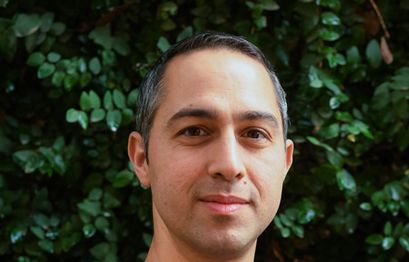If blockchain technology is to scale enough to fulfill its potential, links between different chains will be crucial, and LiquidApps is building those bridges, CEO Beni Hakak said.
Armed with an entrepreneurial mindset and an engineer’s education, Mr. Hakak founded and sold his first company before he graduated from college. That caught the attention of EY, who he worked for in Israel helping startups with business intelligence.
One day his wife, who worked at Apple, came home and told Mr. Hakak everyone in the office was talking about Bitcoin. He began investigating it and fell in love with the technology.
“Something clicked right away,” Mr. Hakak recalled. “I understood all of the dynamics out there and once I saw what Ethereum could do it blew my mind.”
Several areas of his life were converging. Mr. Hakak began mining and became successful. He was also working at Bancor as its director of operations when they built the first cross chain to EOS.

“We knew the limitations of Ethereum and thought EOS would solve them but it was still not scalable enough,” Mr. Hakak said.
He stopped mining and threw himself into scaling and building links between blockchains and from outside sources to blockchain and back again. LiquidApps was born.
I asked Mr. Hakak about Ethereum’s congestion issues and how that impacts his work. He said the issue first arose during the CryptoKitties craze. While some chose to ignore the problems that brought to light, others like Mr. Hakak knew it was an issue to take seriously, and soon.
“If your goal is to create usage in the technology it’s only a matter of time before usage comes and bites you in the ass,” Mr. Hakak said. “DeFi is as major if not bigger of an obstacle than CryptoKitties.”
Until you solve usage congestion issues, blockchain technology won’t scale because the big money and players will wait to see some of these issues ironed out, Mr. Hakak reasoned. Real-time, high-frequency trading on Ethereum is not possible until those issues are addressed.
But there is hope.
“The technology is there, you just need to scale, enable and introduce it into the current foundation of DeFi,” Mr. Hakak said. “Regulators, companies and banks are very much interested in what is happening right now. They would expect nothing less than a lean blockchain, one that does not consume a lot of resources, is not as expensive and which can deal with high-frequency trading.
“That’s the only way we are going to get mass adoption for corporations and banks.”
Mr. Hakak talks with many of the people who can help blockchain scale. While some are interested in tokenization more are interested in the supporting technology. They don’t want to miss the next big opportunity to make money.
Imagine the progression of a hypothetical discussion with such a player looking to move into the blockchain space. They ask Mr. Hakak which blockchain they should build on.
Don’t choose, he’d reply. Develop on the language you know. LiquidApps gives them the agility to switch to a different platform if need be while easily taking their community with them.
“As developers, that should be the focus of most of our efforts when it comes to mass adoption,” Mr. Hakak said.
“That’s basically all of what we have built so far. Its’ kind of like a generic middleware for all of the stack that developers need in order to play in the blockchain backyard.”
For dApp developers they can choose which blockchain to connect to and not be tied to any single one. Banks can access as many validators as they want while gamers may only need a few.
“Basically we want to have a universal bridge ability where any developer from any chain can take the code, mold it a bit to fit the criteria of his own chain and go ahead and run with it,” Mr. Hakak said.
Regulatory certainty will also help the industry grow, Mr. Hakak said. Sites avoiding responsibility, whose owners were looking to make a quick score, fed the 2017 ICO bubble. Without the proper scrutiny that could happen again.
“We need to very much take responsibility for what we do,” Mr. Hakak said. “This will elevate the whole ecosystem. The big money is still outside. In order to get more money into this sector we have to support regulatory needs.”
Mr. Hakak is optimistic these problems will be solved. The blockchain industry is still young, and like some alternative finance sectors before it, there is time to address these issues.
A good place to start is to diversify the knowledge base, Mr. Hakak said.
“I know if we combine the wisdom of people on different chains we will be seeing projects that are profiting from much higher yields because you can actually take the advantages of each blockchain and utilize them.”










